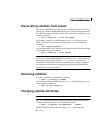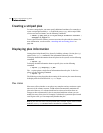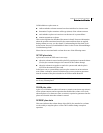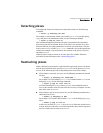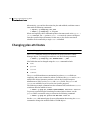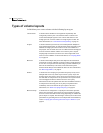
229Creating and administering plexes
Attaching and associating plexes
Plex kernel states
The plex kernel state indicates the accessibility of the plex to the volume driver
which monitors it.
Note: No user intervention is required to set these states; they are maintained
internally. On a system that is operating properly, all plexes are enabled.
The following plex kernel states are defined:
DETACHED plex kernel state
Maintenance is being performed on the plex. Any write request to the volume is
not reflected in the plex. A read request from the volume is not satisfied from
the plex. Plex operations and ioctl function calls are accepted.
DISABLED plex kernel state
The plex is offline and cannot be accessed.
ENABLED plex kernel state
The plex is online. A write request to the volume is reflected in the plex. A read
request from the volume is satisfied from the plex. If a plex is sparse, this is
indicated by the SPARSE modifier being displayed in the output from the
vxprint -t command.
Attaching and associating plexes
A plex becomes a participating plex for a volume by attaching it to a volume.
(Attaching a plex associates it with the volume and enables the plex for use.) To
attach a plex to an existing volume, use the following command:
# vxplex [-g diskgroup] att volume plex
For example, to attach a plex named vol01-02 to a volume named vol01 in the
disk group, mydg, use the following command:
# vxplex -g mydg att vol01 vol01-02
If the volume does not already exist, a plex (or multiple plexes) can be associated
with the volume when it is created using the following command:
# vxmake [-g diskgroup] -U usetype vol volume plex=plex1[,plex2...]
For example, to create a mirrored, fsgen-type volume named home, and to
associate two existing plexes named home-1 and home-2 with home, use the
following command:
# vxmake -g mydg -U fsgen vol home plex=home-1,home-2



